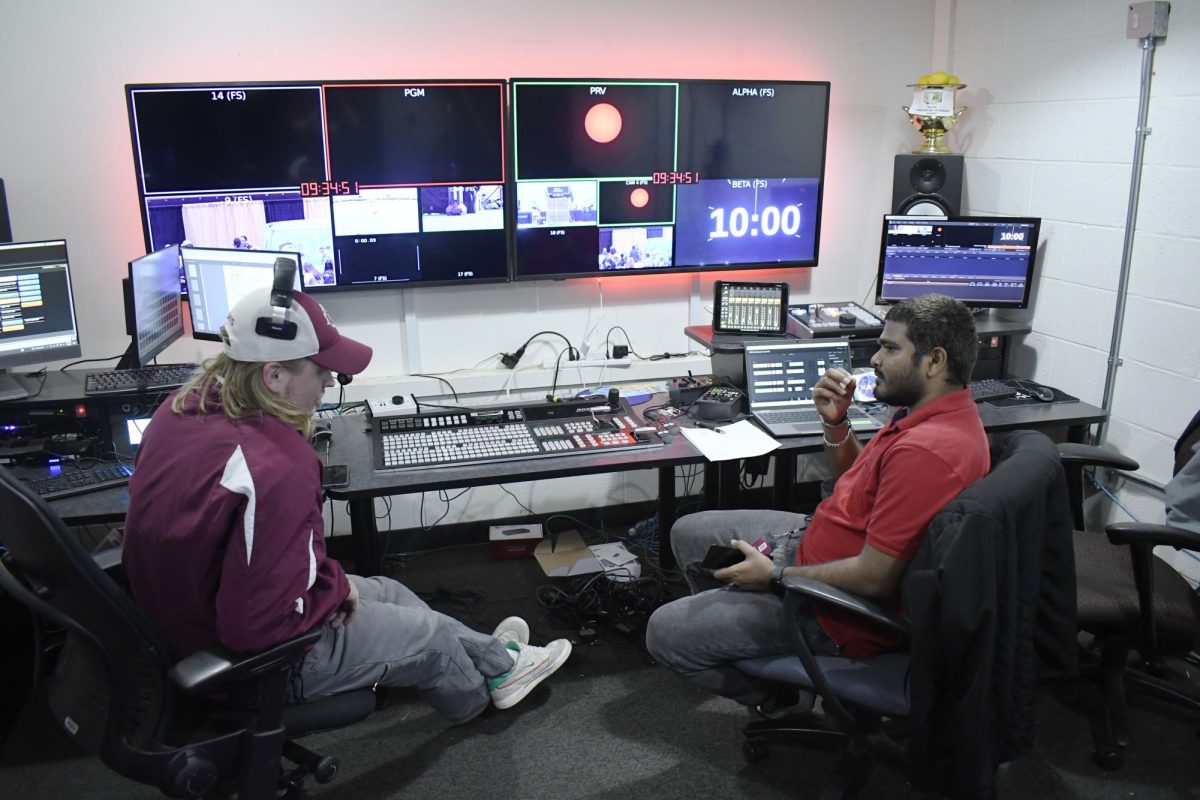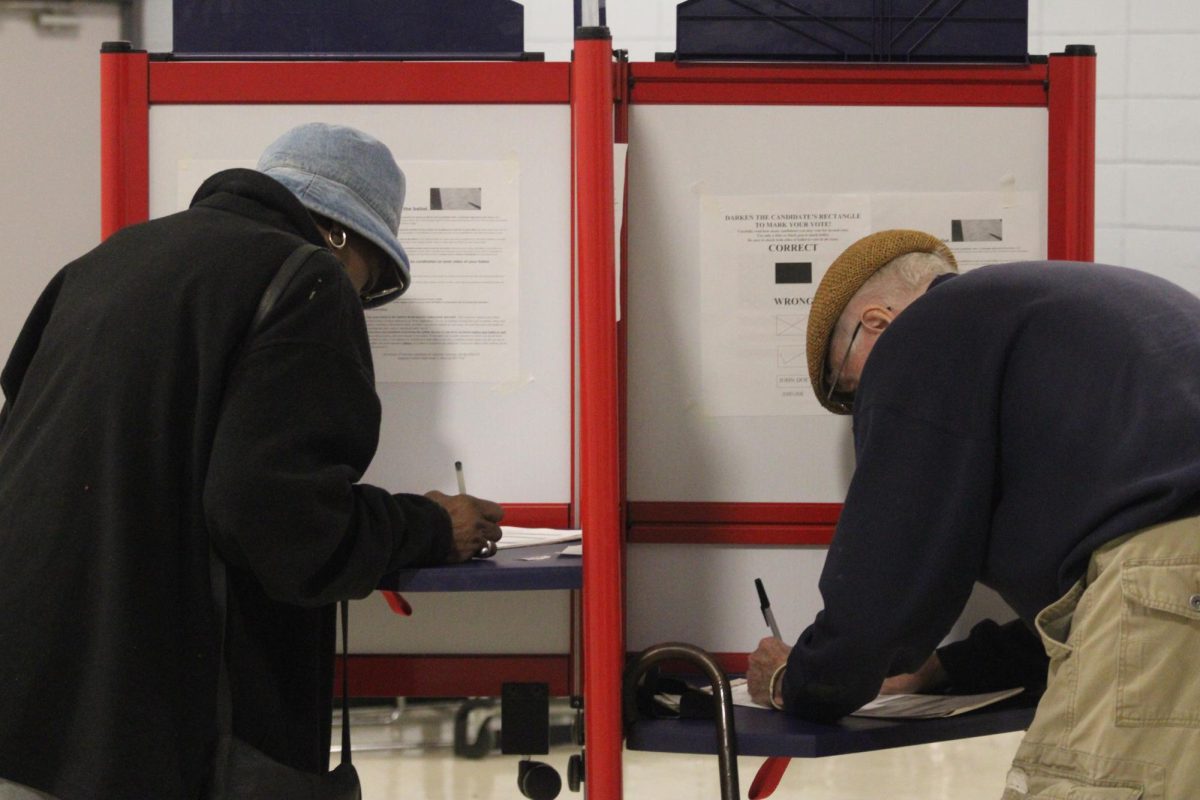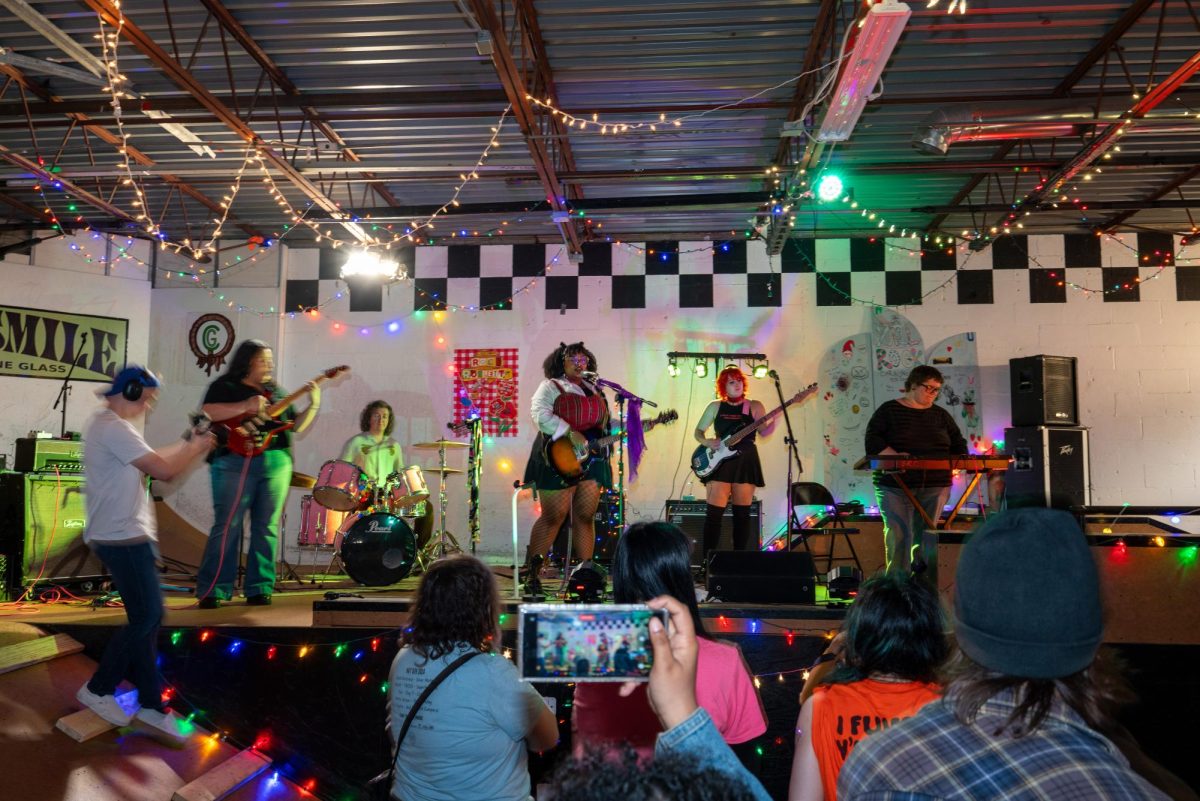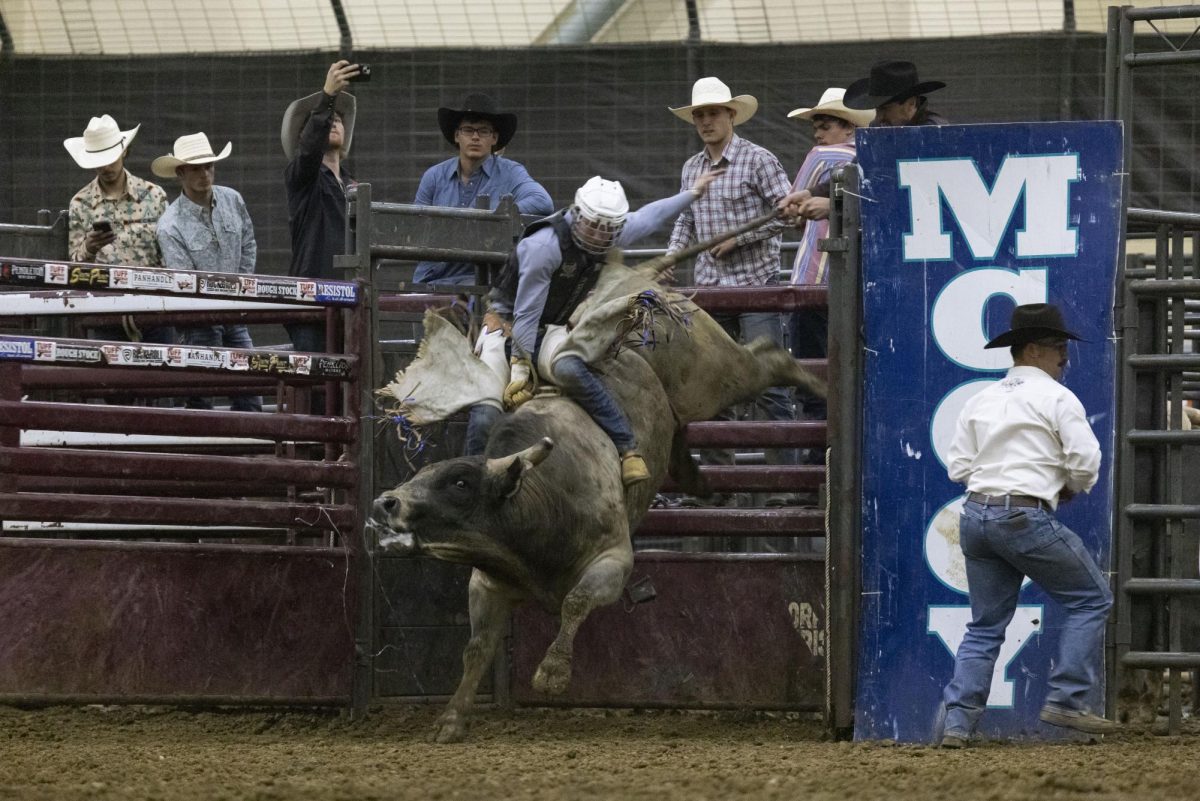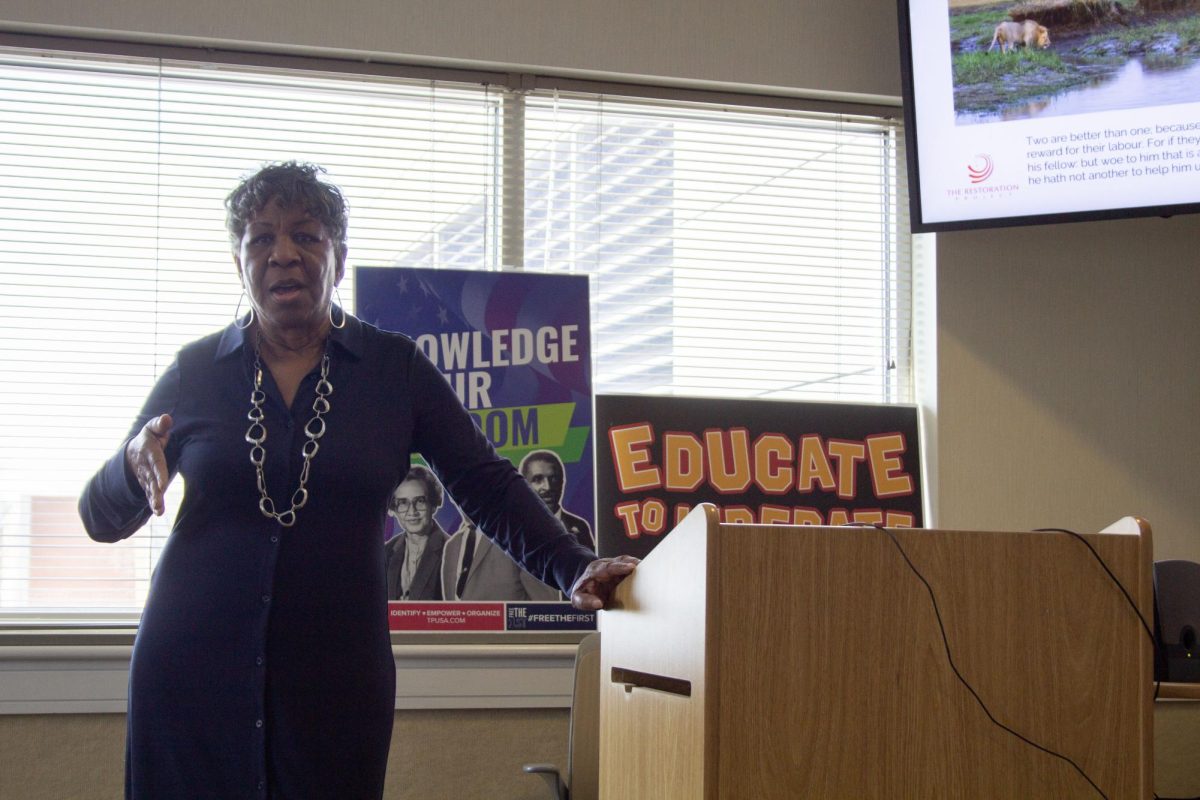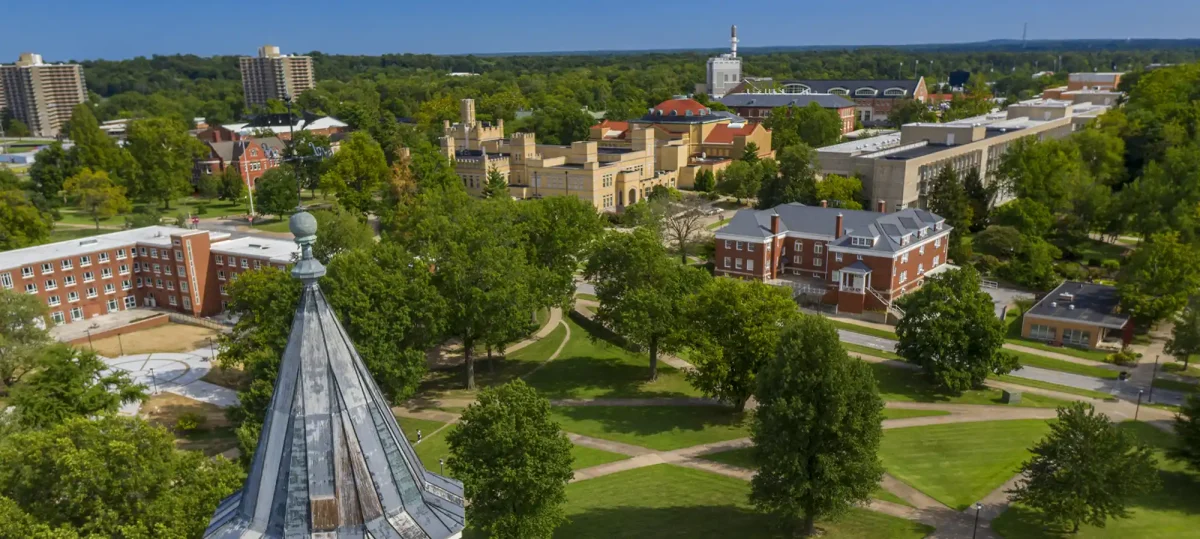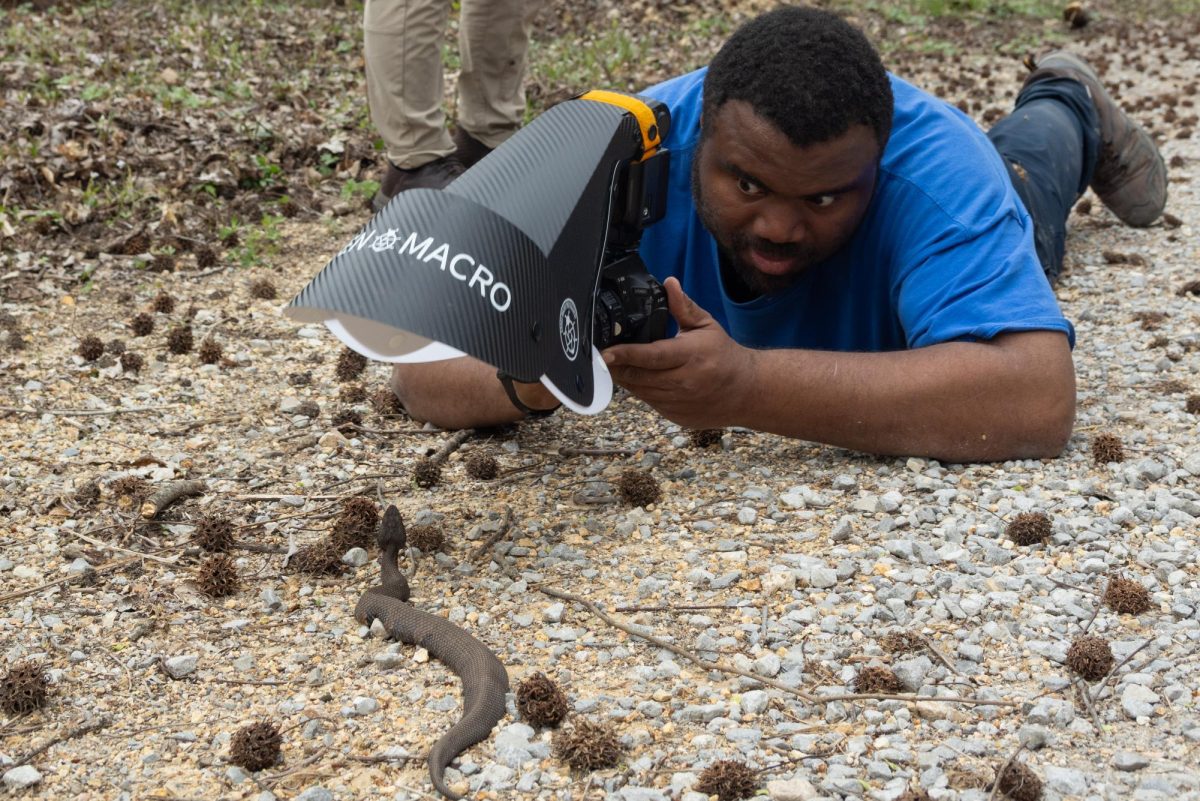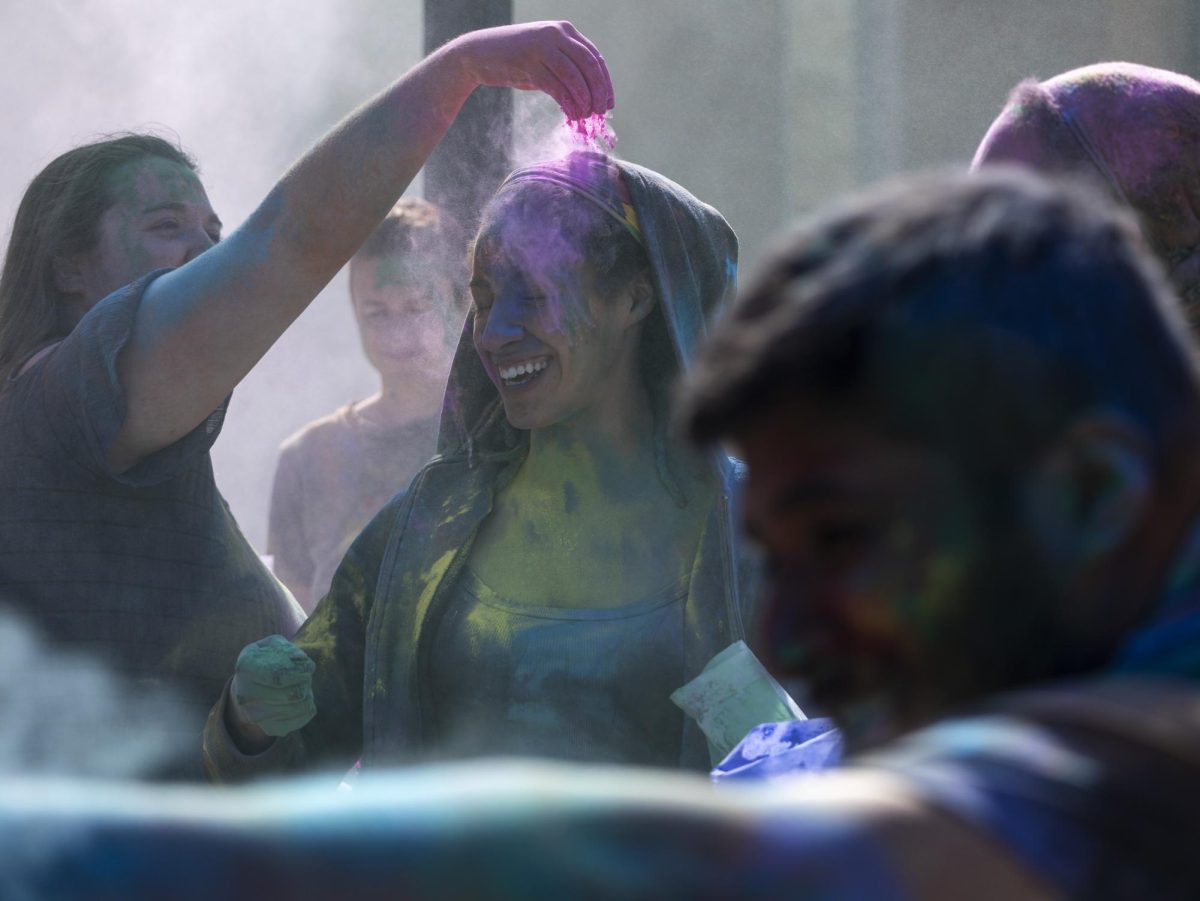If Saluki Stadium is full, it typically means that the SIU football team is playing late in the fall and pushing for a playoff run.
Advertisement
On Monday, there were no football helmets or maroon jerseys adorning the field, and the thousands of spectators present weren’t there to watch football. They were gathered to watch what has been deemed by experts as a “once in a lifetime” event: the total solar eclipse.
Preparations for celebrating and viewing this eclipse have been ongoing since the last eclipse in southern Illinois for many departments across SIU’s campus. One of them is Saluki Athletics’ video department, which was tasked with presenting a show on the video board in Saluki Stadium.
According to Noah Zarn, the live production video coordinator for Saluki Athletics, preparing the show was a multi-pronged effort.
“We worked alongside NASA Edge and the arts department on campus. SIU then created a stadium show for the day of the event, and it’s my job to put the video and content all together,” Zarn said.
Advertisement*
NASA EDGE, a popular video podcast put on by a team of NASA scientists, was in Carbondale for the eclipse and contributed heavily to the show with their telescope feeds, and the SIU theater department produced an entirely original show with several dance numbers and live music.
Much of the content produced by these groups, including live camera feeds from inside the stadium, pre-recorded videos, graphics coinciding with events happening in the stadium, and NASA’s telescope feeds made up the video board show, which was coordinated from a control room in the Banterra Center.
While several athletic venues at SIU have video boards and produce live shows during their respective events, Monday’s eclipse provided a much different experience for the video department. Typically, the furthest departure from an athletic event they produce is graduation or an occasional concert.
This difference showed up in the preparation for the event, which Zarn said has been ongoing, mostly via email, for several months.
While game days typically have a lot of preparation, they also stick to largely the same script throughout the season. The show inside the stadium and the accompanying video board show were well over three hours long and were an entirely unique event, which helped make it a whole different animal than a typical sporting event.
“It’s different crews, so it’s not the usual people I work with for any athletic event,” Zarn said. “It’s a lot of people that aren’t usually around sports, so it’s a little different for everyone. They’re in a sports setting and we’re doing a non-sports show.”
While he’s entering his second year as the live production video coordinator for Saluki Athletics, Zarn also doesn’t have any direct experience producing a show for an eclipse.
“I was a freshman at SIU last time, so this will be my first time working at the event. My staff is new to this as well,” Zarn said.
Zarn’s video staff is composed of several student workers, and many of these students played key roles in both preparation for the show and the execution of it.
Henry Miller, a freshman aerospace technology major who has worked for the video department since the fall, was tasked with creating a layout for the video board that allowed spectators to view several important elements simultaneously.
“I helped set up wireless equipment for the eclipse as well as programming the format of the video board so everyone can see live video, a timer, and closed captions all at once,” Miller said.
Zach Buck, a junior sports media major who has been with Saluki Athletics for two years, helped solve several new tech problems at the stadium prior to the event.
“I helped connect the camera and audio equipment to our control room so we can see the feeds and be in constant communication with the camera operators,” Buck said.
A number of students were in the stadium leading up to, during and after the eclipse, running cameras in order to put spectators and events around Saluki Stadium on the video board. Others were up in the control room, assisting Zarn with various tasks while theater and acting professor Matt Williams directed the entire show from down on the field.
While it was a stressful time for many within the athletics department, there were several positives that emerged, such as solving problems that might occur in the stadium at a later date.
According to Zarn, there was one glaring problem for the eclipse show specifically that couldn’t be solved until the day of the event.
Two of the handheld cameras that were roving around the stadium were supposed to be connected to wireless transmitters, which send a video signal over radio waves to receivers that are hardwired back to the control room. Due to the amount of people, cell phones, and other broadcast equipment in the stadium and the surrounding area, there was concern that the feed from the camera could be choppy.
One of these cameras ended up receiving a hard wire into the stadium, which eliminated all of the choppiness but also meant that the camera was unable to move freely about the stadium. Besides that intricacy, the cameras were able to operate with minimal complications throughout the day.
Besides the obvious occurrence of the eclipse itself, there were professional benefits to the eclipse coming through Carbondale.
For Zarn, one his favorite parts of the process was “meeting other people and keeping up with what they are doing after the eclipse.”
And even though the eclipse and totality were over, the day wasn’t done until all of the equipment had been picked up and made ready to be used at a baseball game Tuesday.
“Once we get back to Tuesday, it’s kind of normal for all us athletics people… I’m kind of looking forward to going back to sports,” Zarn said.
Sports reporter Ryan Grieser can be reached at rgrieser@dailyegyptian.com. To stay up to date on all your southern Illinois news, be sure to follow The Daily Egyptian on Facebook and on X @DailyEgyptian.
Advertisement



